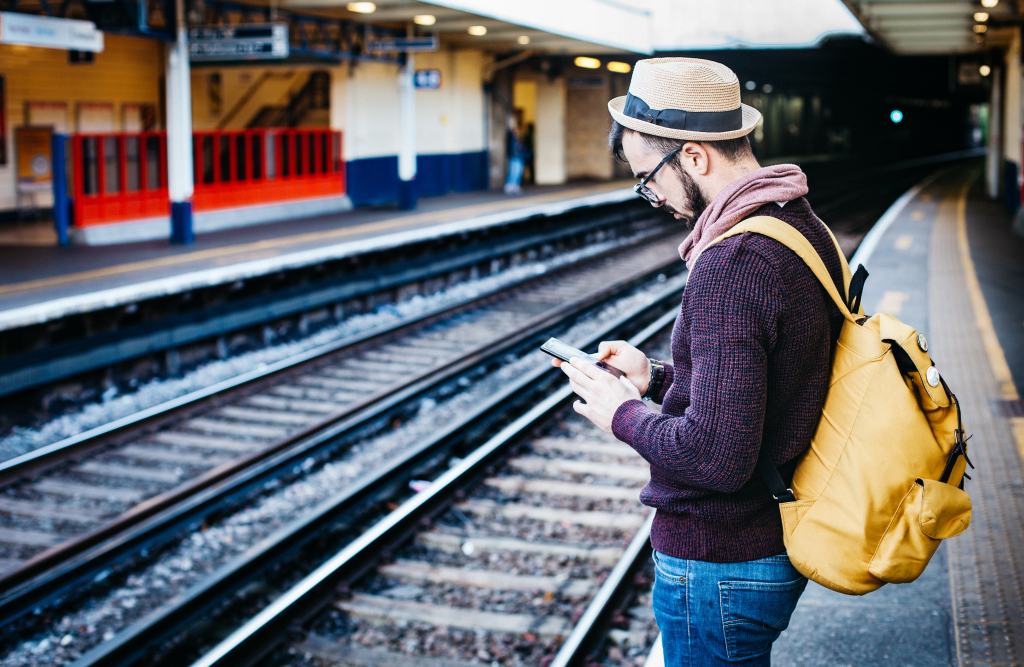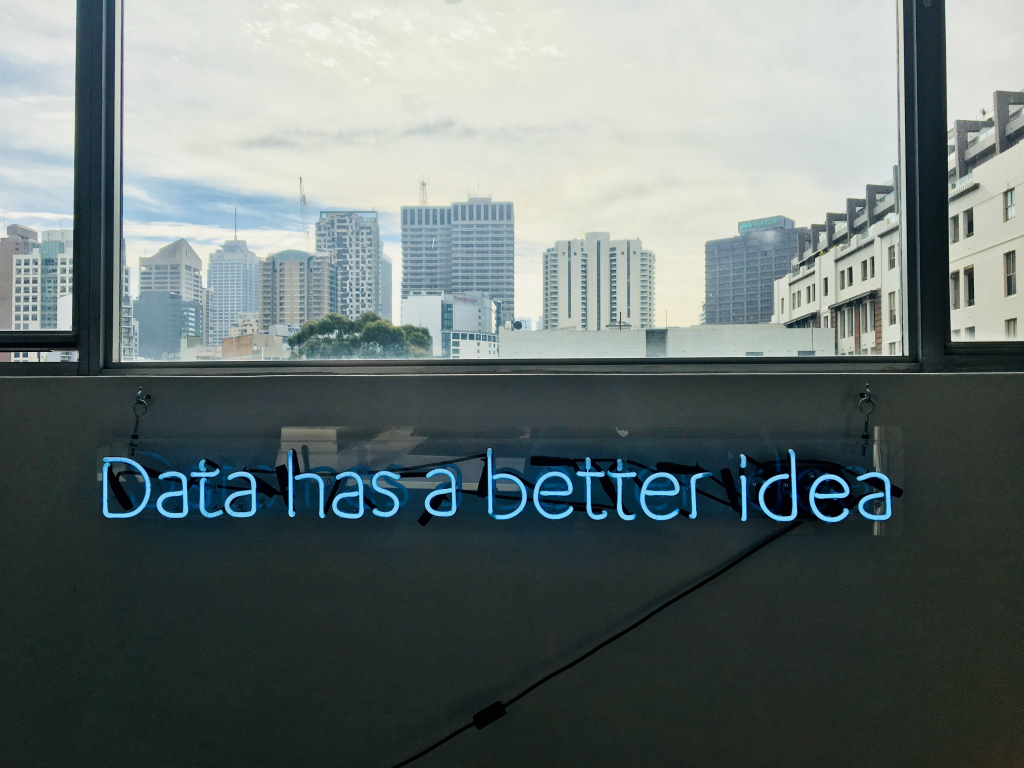The connected tourist
Part one: Nine tech innovations that are crucial for your future business success

Give your customers an exciting, seamless and unforgettable experience that exceeds all their expectations – and harness them as willing ambassadors to help boost your tour or attractions business. With today’s technological developments you can easily deliver this – and a whole lot more.
Driven by those most passionate of technophiles – the Millennials – tourists are now more connected than ever. This creates unmissable opportunities for you to better target, reach, sell and build a loyal relationship with all your customers.
In this two-part series, find out exactly what technology you need to get on board with and how you can best exploit it to achieve even your most ambitious business goals.
In part one we look at the technology that is making today’s tourists – and your customers – more connected than ever before. Time to be amazed – and inspired!
Gee up with 5G
How your customers identify, choose, plan, buy, access and then record their leisure experiences is changing fast – but it’s about to accelerate. And it’s all down to 5G.
Today, the mobile phone is our tour guide, travel agency, restaurant locator, map and fastest growing purchasing tool. According to a Google study, 74% of travellers now plan their trips on the internet, whilst a survey commissioned by TripAdvisor found that 45% of travellers use their smartphone for every aspect of their trip. As 5G rolls out, your customers’ phones will soon be doing a lot, lot more. And you need to be ready.
If you don’t need us to tell you what 5G is, then skip to the next paragraph. If you’ve forgotten, here’s a refresher: 5G will succeed 4G as the fifth generation global wireless network standard. Worldwide deployment began in 2019 to connect virtually everyone and everything together including machines, objects, and devices.
The aim of 5G is to deliver higher peak data speeds: stronger reliability and more stable connections; increased network capacity; better availability; and a wider, more uniform user experience. 5G is going to allow the development of technology that was limited under 4G, allowing users to download content 20 times faster than before.
So your customers will now really be able to start to truly enjoy the Internet of Things!
(If you just said, “The internet of what now?”, let us illuminate you…)
Internet of Things (IoT)
The IoT is the inter-connectivity (through embedded sensors, software and other technologies) between everyday devices, allowing them (and therefore you and your customers) to exchange data with other devices and systems over the internet. There are already myriad examples of its substantial role within the travel and tourism industry. With the rise of 5G this is only going to increase faster and further.
Naturally, there are a number of serious concerns regarding privacy and security, which both industry and government are seeking to address, notably through the development of international standards.
Many stakeholders and commentators believe that the IoT is going to be the major transformative factor – not least in the personalisation (and thus connectedness) – of the customer experience over the next few years.
Contactless payments
Contactless payment is now a key feature of post-Covid tourism and entertainment marketing as customers are nervous about the possibility of infection and therefore reluctant to handle cash or even touch a payment device.
In short, contactless payment allows customers to make secure payments using payment cards, smart watches, smartphones or other mobile devices. Using radio-frequency identification (RFID) technology – also known as chip cards – contactless eliminates the need to swipe, enter a personal identification number (PIN), or sign for a transaction.
Switching to accepting contactless payments is allowing tours and attractions businesses to process payments much more quickly, enhancing customers’ experience by saving them significant time. Increased digitisation of payments also reduces reconciliation times as there is little or no cash balance to be tallied at the end of a shift. Using contactless payments could also protect your own staff’s health; and the reduction – or elimination – of cash from transactions also benefits their security and that of your business.
Blockchain

Blockchain technology is a system of recording information that makes it impossible to hack or cheat the system. A type of distributed ledger technology (or “DLT”), this is basically a digital ledger of transactions distributed and duplicated across a network of computer systems on the blockchain.
Each block contains a number of transactions, so whenever a new transaction takes place it is recorded with an immutable cryptographic signature (called a hash) and a record of it is added to participants’ ledgers. Poised to transform the world as we know it, (according to many commentators,) there appear to be many potential commercially-exciting applications for our sector.
Augmented reality and virtual reality
Augmented reality (AR) or virtual reality (VR) offer infinite possibilities to tour and attractions operators.
AR is similar to VR, but instead of replacing a user’s surroundings, it is just augmenting them so can be used during the customer’s trip or visit. It is cheaper than VR, as customers just need a smartphone or tablet device with internet access. Using graphical overlays, AR provides users with valuable information or pure entertainment.
VR (and “360 tours”) provides users with the ability to experience aspects of your tour or attraction in advance. Compatible with most web browsers, VR is a superb marketing tool to persuade reluctant tourists to purchase a ticket.
Recognition technology
This includes biometric identifiers such as fingerprint or facial recognition and retina scanning.
Facial recognition systems match a human face from a digital image or a video frame against a database of faces by pinpointing and measuring facial features from a given image. Initially a computer application, more recently the technology has been used on smartphones and mobile devices.
Retinal scans use unique patterns on a subject’s retina blood vessels and emerged as an identification concept in 1975.
Fingerprint scanning compares the uniquely detailed pattern of friction ridges on a person’s fingers. This is an ideal method of identification as there are countless combinations and fingerprints are very tricky to alter.
Voice search and voice control
Voice control technology allows devices such as smartphones or personal computers to understand human speech and respond appropriately to simple commands. It works using artificial intelligence to enable devices to recognise speech pattern; internet connectivity then allows the devices to relay relevant information, for example in order to answer questions. Some smart hub devices also have the capability of controlling or interacting with other devices, allowing multiple devices to be controlled by voice commands given to a single smart hub.
Voice search technology allows customers to search using spoken, rather than typing, commands and can be done on any device with a voice input, allowing customers and potential visitors to use a voice command to search the internet, a website, or an app. It can be interactive and allow a system of clarification. Sometimes it is referred to as “voice-enabled”.
Artificial Intelligence (AI)

AI has come a long way from the inspired work of Ada Lovelace or the genius of Alan Turing. Any Terminator, Isaac Asimov or Arthur C Clarke fan will cheerfully agree that AI is intelligence demonstrated by machines and varies from natural intelligence (as displayed by animals and many humans) because AI doesn’t involve consciousness or emotion.
However, AI is able to continuously learn from interactions with customers, accurately and continuously sort through data. It will be able to draw conclusions about business performance or trends associated with customer satisfaction, and even intelligently manage inventories. Therefore, it is currently heavily deployed in the form of chatbots or virtual assistants, or robots in increasingly personable forms.
Big Data
Big data is a fact of life and many of our clients successfully employ their own data collection techniques. But what is “big data”? In the simplest terms, big data is a combination of structured, semi-structured and unstructured data collected and analysed (to identify trends, for example) and the subsequent intelligence gathered then used for predictive modelling and to make strategic and tactical business decisions. It is called “big” because the data sets involved are too large or complex to be dealt with by traditional data-processing application software.
Challenges involved in working with big data include capturing it; analysing it; searching, sharing or transferring it; visualisation; ensuring it is up to date (and therefore relevant); information privacy and the integrity of its source. And, of course, storage: the IDC predicts that by 2025 there will be 163 zettabytes of data globally…
In 2001, Doug Laney – an analyst at Meta Group – identified three key concepts of big data:, known as “The Three V’s”:
1: large VOLUME of data in many environments;
2: wide VARIETY of data types frequently stored in big data systems; and
3: VELOCITY at which much of the data is generated, collected and processed.
(Several other V’s have been added since including VERACITY, VALUE and VARIABILITY.)
That completes the whistle-stop round-up of the most relevant technology. In our next blog, discover how you can harness all this new technology to really boost your tour or attractions business.
Leave comment
Interested in our products?
Ventrata is a comprehensive booking solution for tour and attraction businesses that are looking to win back control of their sales channels and maximise profits. With Ventrata as your booking and ticketing partner, you not only get industry-leading software you also get 24/7 support from our global team!
You must be logged in to post a comment.